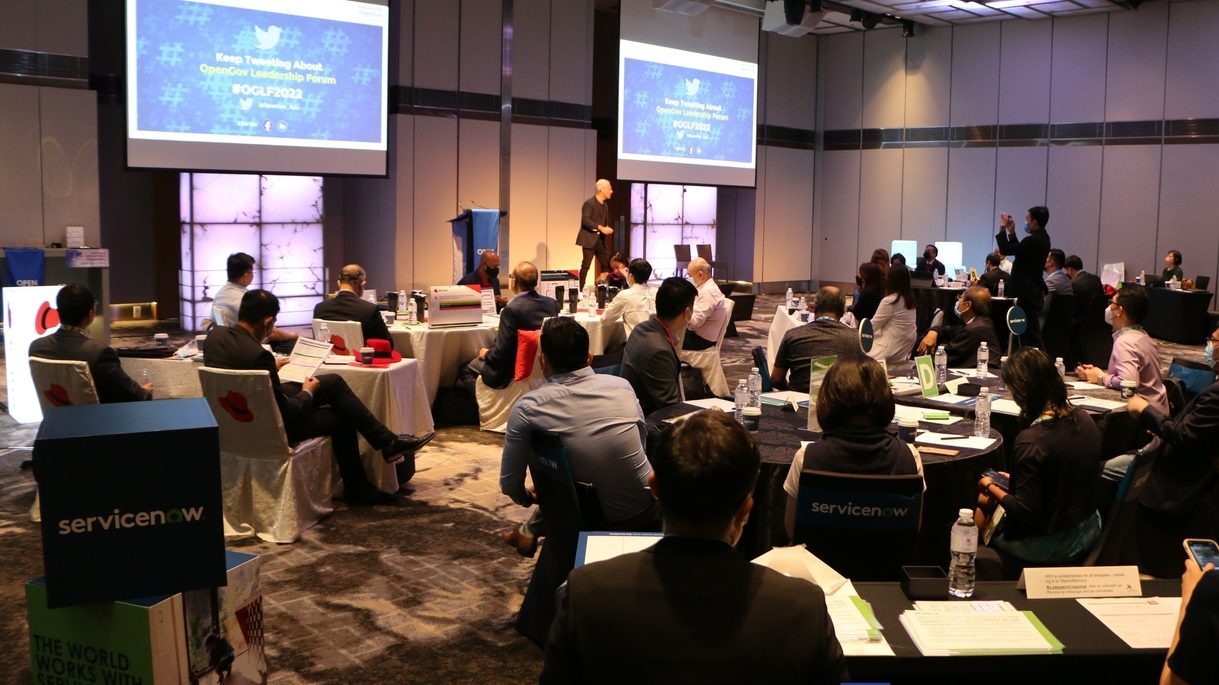
The pandemic has vaulted the governments and businesses into the next stage of digital transformation and online services. Everywhere, organisations have been compelled to accelerate and bring forward their digital transformation strategies.
Data is increasingly at the core of any business or organisation and is a critical raw material for intelligent analytics and the driving force behind digital transformation. Personalisation, efficiency, and effective services are only possible with a comprehensive, 360o view of citizens and customers. This understanding is built on and powered by data. More than ever, data has become integral for organisations interested to get ahead of the curve, gaining a competitive advantage and engaging their customers more effectively.
To become a truly data-driven organisation that operates in real-time, agencies must deploy multiple modernisation initiatives, including application modernisation, artificial intelligence, machine learning, cloud, edge computing and analytics.
At the same time, organisations also need to have the right platforms and architectures that can support the new demands of digital transformation, being able to turn data insights into actionables and adapt to the new working realities of hybrid work.
This was the focus of Day 4 of the Singapore OpenGov Leadership Forum, which focused on how organisations leverage technology on their digital transformation journey, generate feasible corporate solutions that result in real and quantifiable benefits and find platforms that can support them for the future.
Digital transformation in a post-covid world

Mohit Sagar, Group Managing Director and Editor-in-Chief, OpenGov Asia, kicked off the session with his opening address.
COVID-19 changed many realities and a caused significant paradigm shift in digital thinking. For one, working from home became accepted as part of the work culture. “People want the hybrid model,” Mohit stressed.
However, the question is: does the existing technology in organisations allow them to cope with the rapid changes in the new normal?
While the world is evolving in a big way, there are key pillars on which this transformation currently rests. Mohit shares his acronym of ACDC2, where ‘A’ stands for augmented intelligence, ‘C ‘stands for convergence (of the physical and virtual), ‘D’ is data, ‘C’ stands for cyber resilience and C2 represents critical events.
“The concept of identity and how we determine or confirm it, is being fundamentally altered,” Mohit states emphatically. “For the last 15 years, we have been focusing on identity – banks, healthcare, public and private sector. When Facebook came into the picture, people started being able to create their own identities. Today, Facebook is an authenticator of identity. Even that will change – with the rise of the Metaverse.”
Some of the most forward-looking initiatives today are focused on decentralised identity, which uses blockchain and distributed ledger technology to create identity databases that are controlled by algorithms rather than institutions. Pilot projects involving decentralised identification built on Microsoft platforms are taking place in the UK, Tokyo and Belgium. Additionally, the EU has stated that blockchain technology should play a part in “enhancing” the European digital identity framework.
Positions and perspectives are also subject to change – sometimes diametrically opposed to the initial ones. In 2013, the US Securities And Exchange Commission said that cryptocurrency is fake – it was denounced. Yet today, SEC is regulating cryptocurrency.
The world is changing rapidly and the ways that people do business are also developing. “Technology is flying and people have to get ready for tomorrow,” Mohit contends.
To cope with the new demands of the citizens, organisations need to leverage data, embrace AI and pivot towards automation. “These trends are here to stay,” Mohit opines. “10 years ago, cloud was a fancy notion but today the Singapore government is pouring money into it.”
He encouraged delegates to look for partners who are experts in their field of work who can help organisations keep their glass full so that they can focus on their business objectives.
Establishing trust in a nation’s digital ecosystem

Dominic Phoon, Deputy Director National Digital Identity, Government Technology Agency of Singapore(GovTech) spoke next on the journey of National Digital Identity in building trust in the digital era.
“Why is digital identity important?” Dominic asks.
Across the globe, countries have implemented or have started to implement their own national digital identity, each with its own degree of success. However, both government and private sector businesses are recognising digital identity as a core foundation of the digital economy.
Many countries focus their national digital identity programme on the issuance of a digital credential to the citizens, either in the form of a smart card, or a mobile and crypto-based identity. In Singapore, where the latter has been employed, there is a belief that digital identity can be much more than that – laid out in the 3 main objectives for its digital identity:
- Digitally empower: Providing a convenient and secure means for individuals to transact digitally with more confidence, with both public and private sector services
- Digitally enable businesses: Providing a series of trusted services, so that businesses can digitalise operations and capture the opportunities that come with digitalisation
- A digital ecosystem of trust: Promote trusted data flows
Singapore is an open interconnected global city that has built a world-class infrastructure for the movement of goods and people, Dominic asserts. This has made Singapore a trade hub and the people hub of the world. In the digital era, people need to have a trusted digital infrastructure that facilitates the movement of data, enabling trusted data flows across boundaries of systems, organisations and even borders.
And to support this digital platform, the nation started by building and then maintaining a high performing, secure and resilient on-cloud architecture. The focus of this architecture centres around the following pillars:
- Reliability – ensure services work as expected all the time
- Performance Efficiency – optimise and scale all processes to get the fastest possible outcome.
- Security – protect the confidentiality and integrity of assets
- Operational Excellence – active monitoring of all systems as well as continual improvement to operating processes and procedures
A stable and robust foundation enables the easy proliferation of products as well as helps foster trust and confidence from both consumers and businesses in using the national platform.
With the architecture in place, the next task is to drive adoption for both consumers and businesses by enabling useful digital services from both public and private sectors alike. The benefit for these businesses is that they need not host or build their own architecture, they can simply leverage the government platform. For consumers, the architecture provides seamless and trusted access to businesses.
Over the last 3 years, GovTech’s focus has been on building these components of the digital infrastructure and platform. This includes 7 API (Application Programming Interface) products for businesses, as well as the Singpass app, which is the key product citizens will use to transact with government and private sector services that offer higher assurance and trust.
GovTech has scaled up resources to support SafeEntry and COVID-19 contact tracing. Using their infrastructure, they were able to roll out SafeEntry within 3 weeks which was subsequently enabled across 200K venues islandwide, amounting to more than 300 million transactions a month.
With their platform and products in place, they partnered with businesses to co-create more innovative and value-added services. Organisations can leverage the ready suite of Singpass APIs to help them enhance services and customer experience.
Dominic shared the many ways in which GovTech has value-added services. It includes Myinfo, Login with Singpass, verify with Singpass, face verification with Singpass, Sign with Singpass and the Singpass App.
While the SingPass app was launched in Oct 2018, GovTech has since adopted an agile approach in releasing new features and improvements progressively. The user adoption has, to date, exceeded 3.5 million users.
Another important benchmark is their monthly active users which exceeded 2.9 million, indicating that over 90% of users use SingPass app at least once a month. Singpass can now be used to access more services with both the Government and private sector, be it viewing a CPF (Central Provident Fund) balance, accessing a bank account or even donating.
GovTech has come a long way since 2017, Dominic states. When the national digital identity was launched as a strategic national project, giving recognition of its importance as a digital enabler not only to the government agencies but also to the private sector.
Since the launch of their platform, the number of services facilitated by Singpass has quadrupled from just a year ago to date. Residents can access more than 1,900 services using Singpass, with over 200 million transactions conducted each year.
Today, businesses have seen benefits in harnessing GovTech’s trusted platform to deliver value to their customers and they expect more businesses to take advantage of this platform to further grow their services for even more customers.
He encouraged delegates who are interested in finding out more to reach out to him.
Democratising and Scaling AI and Intelligent Automation Initiatives
Picking up on the conversation on automation, Mohit Sagar, Group Managing Director and Editor-in-Chief, OpenGov Asia and Ravi Bedi, Head & Practice Lead AI-Led NEXT Solutions, NCS discussed various automation initiatives undertaken by NCS.
With rapid digital transformation, a skilled workforce is key, Mohit thinks, and is keen to hear Ravi’s opinions about the manpower shortages in the field of AI, “How can Singapore as a nation amplify its workforce sustainably in AI?”
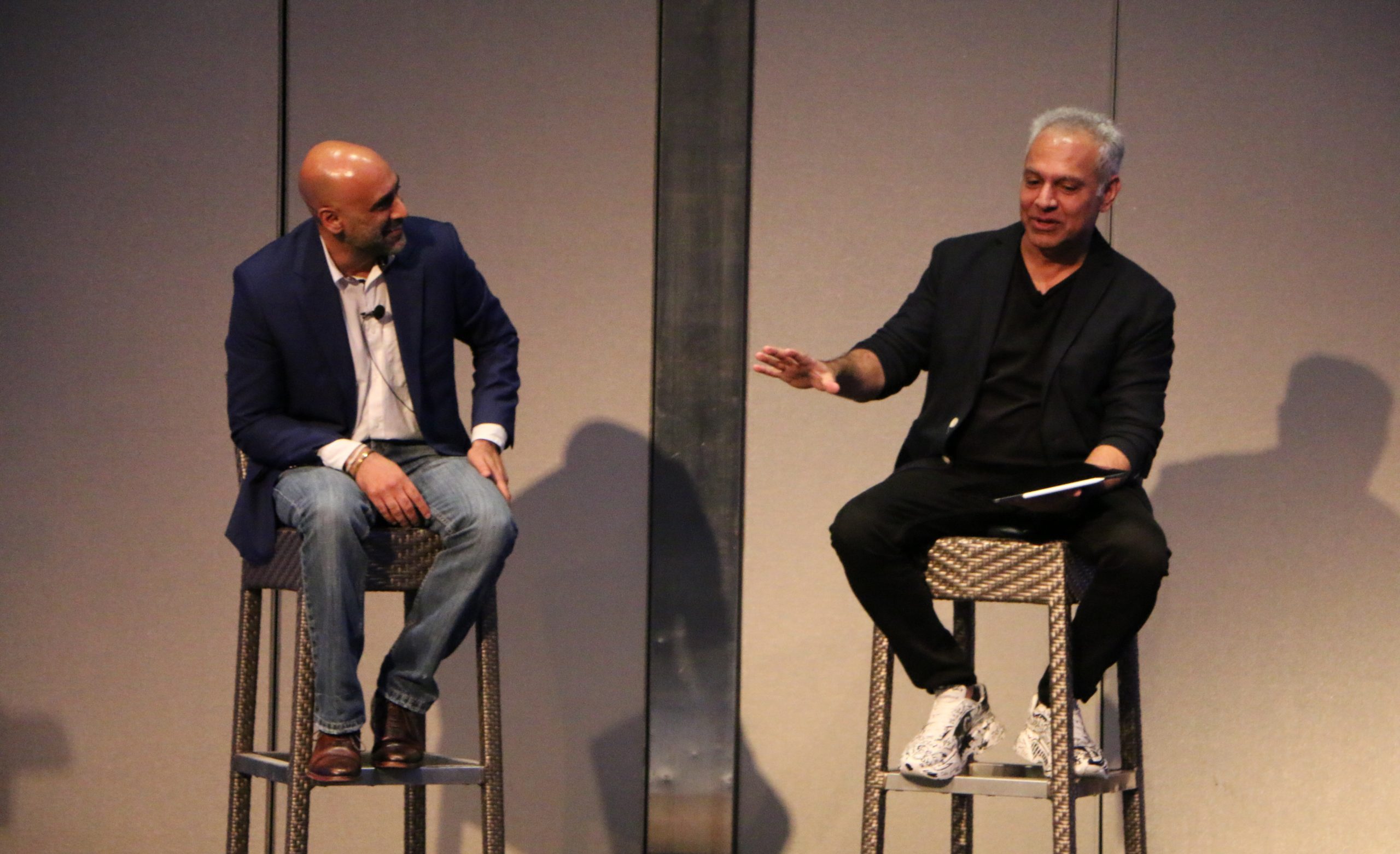 Ravi firmly believes that Singapore is a testament to how it is possible to “pull a rabbit out of a hat,” moving from at breakneck speed in advancement. NCS is focused on nation-building and changing for the next generation in Singapore. The issue of training the next generation has been on their minds from the get-go.
Ravi firmly believes that Singapore is a testament to how it is possible to “pull a rabbit out of a hat,” moving from at breakneck speed in advancement. NCS is focused on nation-building and changing for the next generation in Singapore. The issue of training the next generation has been on their minds from the get-go.
NCS is focusing on what Ravi calls, applied innovation. They have been pushing the concept of the citizen data scientist. Many other tools are esoteric, requiring expertise in data science and training. Elevate is a completely mechanised AI-as-a-service platform where people who may not have the training can utilise the platform.
The platform has taken out the hardcore data science requisite and put it into a platform with AI advisors so that one will know what data to select – it can even assist in data cleansing. Their objective is to put the platform in MOE so that Singapore can produce native data scientists to solve problems that the nation has.
NCS has a marketplace where employees can build hyper-personalised finance, HR or procurement AI applications that can be uploaded to a marketplace. There, the rest of the community can utilise and reuse the applications. With such an initiative, a false multiplier is created within organisations.
Ravi believes in the importance of being able to apply at scale internally before offering the idea to other organisations. A platform that NCS has developed is “So How,” which has conversational AI, speech recognition and embedded enabling technology but packaged it as a service to NCS employees. They have done away from coding and designed it to have API level integration.
A great example of the utility of “So How” was its free availability for Singaporeans in submitting ART results. One of their staff built a computer-vision capability into “So How” for ART submissions as a free service for all Singapore.
To use it, individuals can sign into WhatsApp or Telegram and send an image via the chat and it will be received by the consolidator on the other end. The computer-vision will determine if someone is positive or negative, the brand of the test kit and other information. The results are then generated as an excel spreadsheet with a photograph.
On AI and automation, Mohit is eager to have Ravi’s insights on its future in Singapore. In response, Ravi shares that NCS is looking into bringing the democratisation of AI skills to schools.
Mohit opines that the COVID-19 pandemic has made AI and Intelligent Automation a boardroom imperative and the urgency to scale up these technologies is stronger now than ever. He asks for Ravi’d thoughts on how AI is becoming the ‘new run-time of an organisation” and getting embedded in their operating model.
To set the context of his reply, Ravi believes that every technology needs a catalyst. Moreover, he feels that the focus is too much on the technology as opposed to the outcome. It is key to understand the human being.
As far as embedding AI into operating models, Ravi says, “It’s not just about one product.” Technologies that are strung together will become the run-time, he believes, and NCS is making the run-time by developing new Intellectual Property.
Revolutionise Operations, Materialise Innovation and Realise the Future of Work
Following the conversation on AI and automation, Mohit Sagar, Group Managing Director and Editor-in-Chief, OpenGov Asia and Dan Ternes, Chief Technology Officer APAC, Blue Prism discussed how Intelligent Automation is operationalising and democratising AI, turning it from just a research project to a pragmatic, feasible corporate solution, resulting in real and quantifiable benefits.
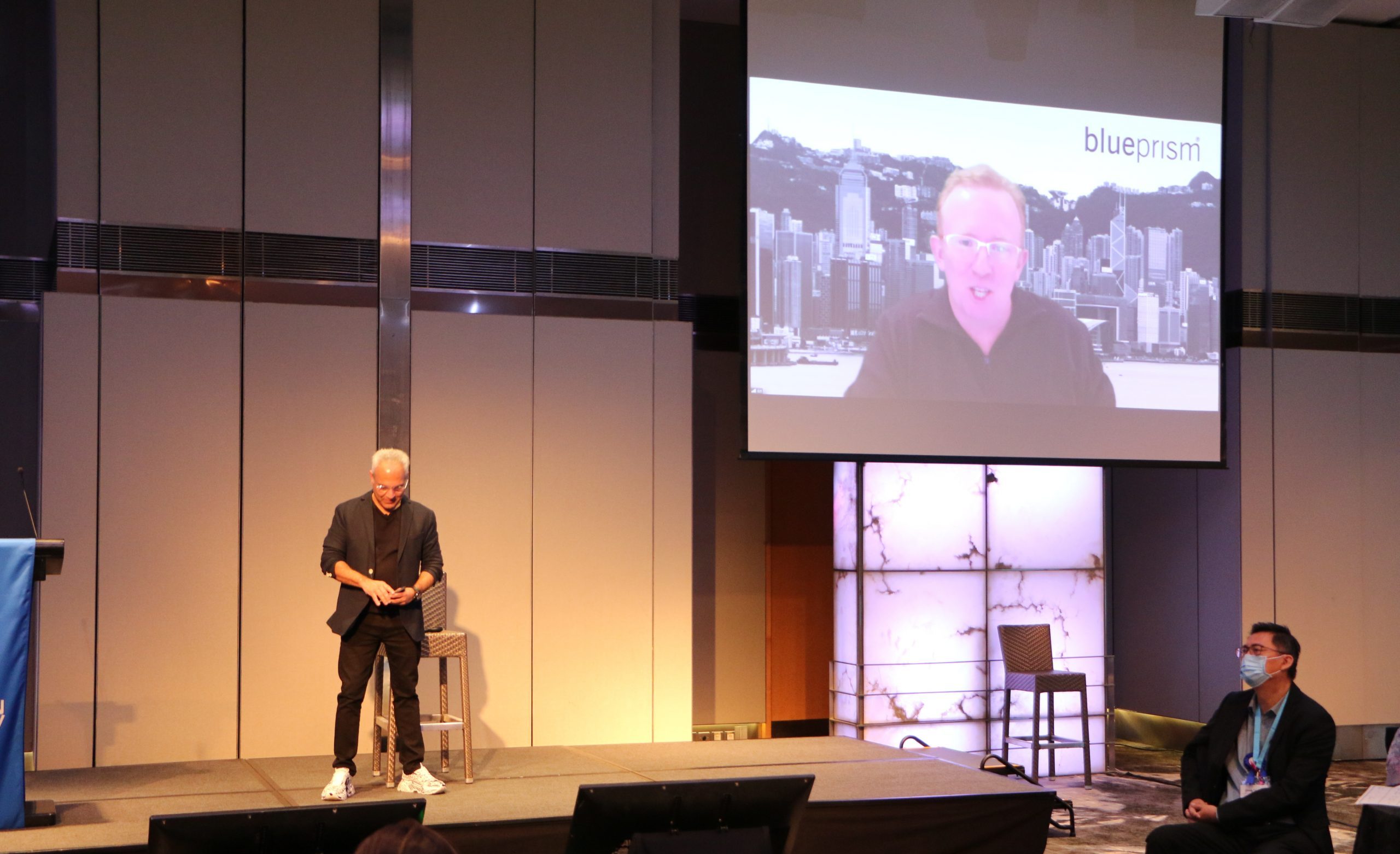 Mohit kicks off the fireside chat by referring to a study commissioned by Blue Prism. In that survey, 73% of Singapore business leaders are facing difficulties in applying RPA further, while 71% feel more thought needs to be put into its application. In light of these statistics, he asks for Dan’s thoughts and recommendations for these organisations.
Mohit kicks off the fireside chat by referring to a study commissioned by Blue Prism. In that survey, 73% of Singapore business leaders are facing difficulties in applying RPA further, while 71% feel more thought needs to be put into its application. In light of these statistics, he asks for Dan’s thoughts and recommendations for these organisations.
Dan believes that the expresses reason people struggle with RPA is that organisations begin their journey with the wrong expectations. Organisations evaluate poorly because there are not enough people with real experience of what it takes to apply RPA correctly. People do not know the questions to ask. “We are building our marathon team to run 400m sprints.”
Apart from that, organisations see RPA as being the solution to the mundane and menial. However, mundane and menial are bywords for non-tangible value or non-business outcomes. Some organisations need to rethink, others need a reset.
It is said that often because some of these organisations have been automating tasks rather than processes and hence, they are facing these roadblocks to scaling up their RPA projects. “What is your advice to these organisations so that they are geared up to move across and scale beyond?”, Moht asks.
Dan remarks that organisations are looking at automating tasks but that they should be looking at automating processes. The things that create real value for the stakeholders, processes instead of tasks are what needs to be addressed.
“You have to create a centralised team of experts and create some real wins,” Dan asserts. “Organisations would want someone with critical thinking and political capital to be running the RPA programme, rather than someone that does not want to make mistakes.”
On RPA’s potential to be used as a platform – and not merely a productivity tool – to give local organisations access to digital technologies such as AI, Mohit was keen to gain ingts from Dan.
“It is not just a potential but essential,” Dan says. “Productivity is not the source of it.”
For Dan, it is about utilising RPA to address problems and improve user experiences. Problems often require solutions from different technologies. Blue Prism RPA handles the end-to-end activity between systems and hence becomes a platform that solves problems.
How should organisations ensure that their employees are properly prepared to face a change in the way they work so that they do not miss making real progress? He believes in emphasising service quality over costs and walking the talk. People want to see things actualised instead of lip service. When that is done, people have buy-in.
Mohit remarks that organisations across the industries have realised the importance of AI and have made investments in it to re-shape their business model so that it is more responsive, more efficient, and more resilient. Many of these same organisations, however, have struggled with getting the ROI they expected. Mohit was keen on hearing Dan’s thoughts on how to operationalise AI, turning it from just a research project to a pragmatic, feasible corporate solution, resulting in real and quantifiable benefits.
AI is more than research projects and it cannot exist in a vacuum in an organisation, it must be integrated upstream and downstream. Sometimes, that is made difficult because of legacy systems. At the upstream level, organisations need to have a good mechanism for pulling data from diverse sources and correlating that together, preparing the inputs for the AI algorithm. Downstream, the results need to be turned into operations. Only that way can people turn AI results into a corporate outcome.
Polling Results for Morning Session
Throughout the session, delegates were polled on different topics.
In the first poll, delegates were asked about their organisation’s biggest challenge in digital transformation strategy. Well over half (58% ) indicated that culture is the biggest issue. Over a third (38%) were hampered by skills that they have while only 4% found the technology a challenge.
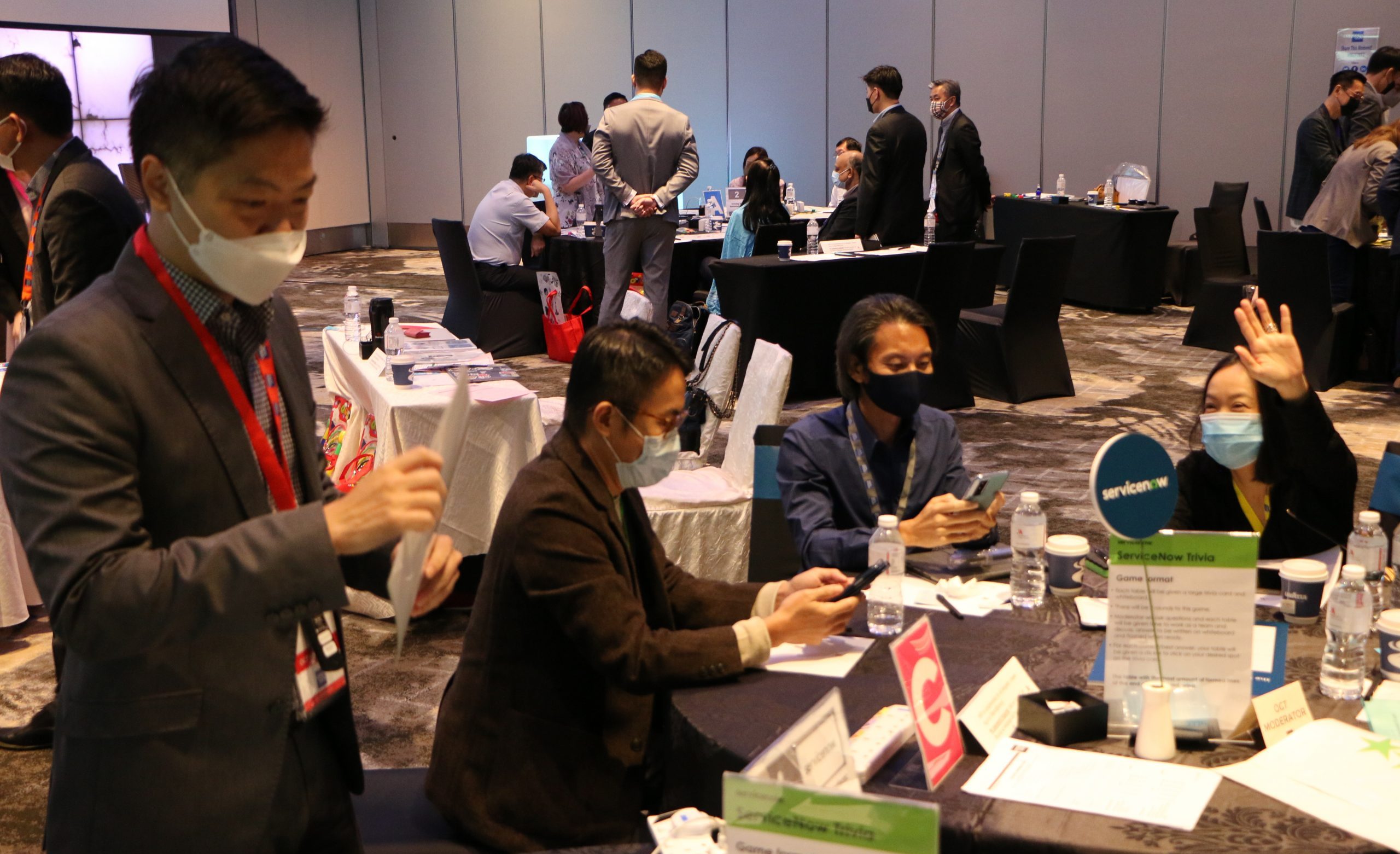 On the percentage of their overall IT investment that delegates see being committed to their digital transformation strategy over the next 2 years, delegates were fairly evenly spread over a range of 30%-50% (38%), between 10%-30% (35%) and more than 50% (27%).
On the percentage of their overall IT investment that delegates see being committed to their digital transformation strategy over the next 2 years, delegates were fairly evenly spread over a range of 30%-50% (38%), between 10%-30% (35%) and more than 50% (27%).
Asked to vote on the most important outcome they are seeking in their organisation’s digital transformation journey, more than half (57%) expressed that operational efficiency is the most important outcome. The remaining delegates felt that the speed of developing and deploying changes (29%) and the reliability of newly deployed changes (14%) are the most important.
On the role delegates see open-source software playing in their company’s digital transformation, the majority (43%) found it somewhat critical. The remaining delegates found it marginally critical (30%), supercritical (22%) or not critical (4%).
About the external help delegates think is needed most to accelerate their digital transformation journey, most (33%) felt that mindset change and new ways of working is needed. The remaining delegates think that building the framework and a standard platform (28%), automation (22%), training and enablement for cloud technologies (11%) and agile integration (6%) are needed most.
On the area of priority that delegates will position automation for, a large portion (45%) said they would prioritise citizen and customer engagement. The other delegates indicated co-agency/inter-departmental collaboration (36%) and cybersecurity (18%) as priorities.
When asked about what delegates thought the most important skill set needed for their employees to remain relevant in the modern workspace, delegates were evenly divided between the skills of being a team player and having cross-cultural literacy (39%) and the ability to learn using digital tools (39%). The remaining delegates also equally indicated the ability to work independently (11%) and time management (11%) as important skill sets.
Inquiring on the area of interest that delegates value the most, the majority (41%) were interested in tools that can deliver automation in areas like compliance and data classification. Other delegates were interested in the ease of doing business through a simplified technology consumption model (32%), delivering business resiliency through available applications and workloads (23%) and visibility into cross-system data and infrastructure to identify unexpected changes and potential risks (5%).
In the final poll for the morning session, delegates were asked what they would spend on if they had an unlimited budget. Over a third (39%) would spend on integrating disparate systems, while a third would spend on staff training / upskilling (33%). Slightly less than a quarter (22%) would spend their money on updating legacy technologies and only 6% would spend on resources to improve delivery time.
Digital Platforms for Smart Nation Citizens

Sean Sim, Cloud Solutions Director ASEAN, Red Hat spoke next on building a modern digital service platform.
In the digital age, citizens are very discerning customers. Governments, thus, must respond with high-impact digital services which are user-centric in design. A key element of being user-centric is the ability to get feedback quickly and incorporate the feedback into updated digital services through iterative development.
Leading governments today are using modern application development practices such as DevOps and Continuous Integration and Deployment (CI/CD) to respond quicker and better to citizen needs. This needs to be coupled with key technology enablers, such as microservices running on lightweight containers that can run across hybrid cloud environments seamlessly.
Many organisations have transformed because of COVID-19, yet a lot remains to be done because organisations are looking at the process linearly. Innovation is done in silos. However, digital transformation gives people the ability to get resources self-service.
Organisations need to know what they need to develop e-services. Red Hat’s role is to provide organisations with the means so that they can spend less time evaluating technology and spend more time thinking about how to elicit change.
According to Sean, the current IT landscape looks like a museum with eras of IT history that don’t belong together and demand great effort to keep business running. Some observations include:
- Innovation is slowed as support for new technologies (containers, mobile, microservices) is slow or missing.
- Rogue IT often erupts and results in security risks
- Ticket systems constrain the flow of innovation with longer than necessary waits for resources
- Hardware expansion is constrained by budget and procurement
- Promotion of changes is manual, exhaustive and error-prone
- Management is complicated by mismatched tools with competing functions and fragmented views
- Security is weakened by fragmented approaches, vendor-specific capabilities, rogue IT and shadow ops
Often, it is easy to imagine new technologies newly implemented and working like a charm in environments. In reality, it is like remodelling your current house. While, in theory, the best thing is to tear everything down and rebuild from scratch, one does not do this with one’s house for practical concerns. Just like your systems.
There are running services that represent the business and there are legacies to contend with. The existing enterprise service bus or ETL still need to run. At the same time, organisations wish to create more new services the modern microservices way on top of them. They need a regular middleware stack featuring familiarity like Springboot Java that have successfully have been modernised itself to be still dependable on internet-scale. Modern concepts like a streaming platform for data flows to be more efficient and easier to connect should also be part of the stack.
Importantly, these tools, both old and new, should be readily available and be in an environment that is easily available for developers to explore and rapidly experiment with to get confident.
According to Sean, once organisations have put in place a stack that considers new and old appropriately, they stand to gain from the open-source possibilities that are developing today. He encourages the use of fundamental modern capabilities and being able to do things like have data flowing into the correct applications in real-time, share information with other agencies or third parties needing them or even create instantaneous responses to requests. That is where efforts should be focused on while the technology stack should be an established provider.
In conclusion, Sean believes that once organisations have everything unified under a single architecture, other problems like security will be addressed. Red Hat offers unified management. Apart from that, Red Hat also helps customers systematically tackle digital transformation. They can conduct discovery workshops to understand why organisations want to embark on digital transformation and offer advice on how to better improve their capabilities.
Accelerate, Innovate and Transform – Connect people, functions and systems to accelerate innovation, increase agility and enhance productivity
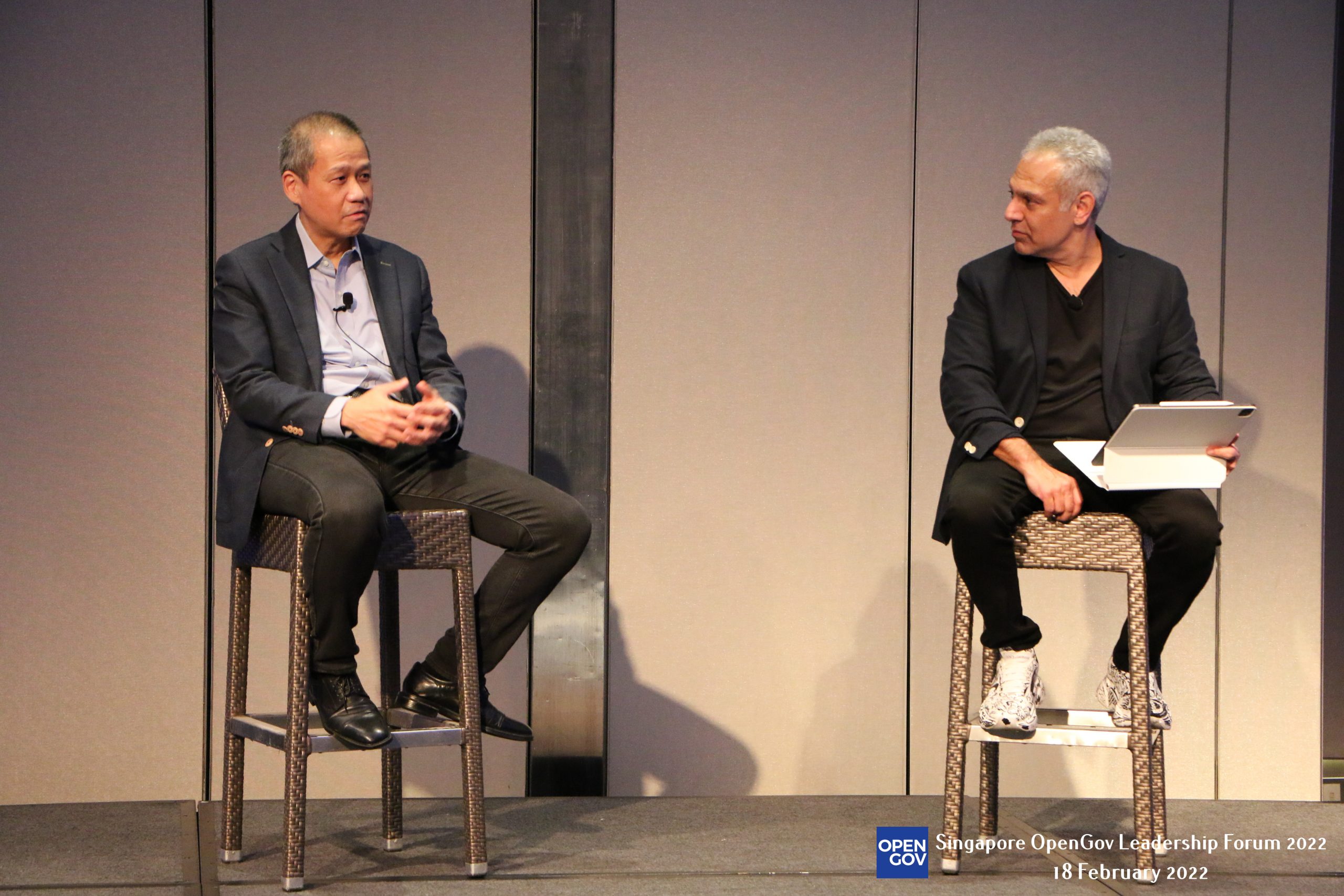 In the final sharing of the day, Mohit Sagar, Group Managing Director and Editor-in-Chief, OpenGov and Willie Hui, Director – Solution Consulting, Asia, ServiceNow explore how to help organisations innovate quickly, realise fast time-to-value, improve productivity and deliver great experiences.
In the final sharing of the day, Mohit Sagar, Group Managing Director and Editor-in-Chief, OpenGov and Willie Hui, Director – Solution Consulting, Asia, ServiceNow explore how to help organisations innovate quickly, realise fast time-to-value, improve productivity and deliver great experiences.
Post COVID-19 recovery phase is an opportune time to reimagine the citizen experience for government and enterprise leaders who were already making progress on digital transformation, Mohit asserts. The sudden need to allow millions of staff to work from home during the pandemic has thrown digitisation plans into top gear. Mohit is curiou to know Willie’s thoughts on how this momentum of delivering intuitive, consumer-like services is possible with the usage of modern self-service tools.
Willie notes that in the last 2 years, the digital transformation has been accelerating. Working from home and hybrid working is a norm. To achieve working from home, government organisations and enterprises are looking at how to make work easier for employees and how to create better experiences for the customers and users. The other factor is that the new generation is familiar with self-services.
Willie also observes that all organisations are looking at how to transform from old methods of doing service to the new way of having digital services and self-service.
In terms of how to become more agile, he suggests 3 areas to focus on:
- Experience: Intuitive and personalised
- Digitising workflow: Middle and back-office needs to be digitalised so that organisations can identify what is happening and areas to automate
- Intelligence: Embedding intelligence in the workflow
There is no shortage of data in organisations. The important thing is to be able to turn the data into actionables. ServiceNow is a platform that provides simplicity for the different applications that an organisation has – HR, finance, workplace and security.
For Mohit, hybrid work is the future. He is eager to have Willie’s insights on how productivity can be measured.
Willie clarifies that the baseline is to build an environment wherein employees have a system that is connected and unified for people to do the work. In terms of measurement, there is no need for new KPIs. Rather than add new measurements, the KPI can be about what is the adoption of services. Willie mentions that well-being is a new indicator that has been added.
In the final question, Mohit was keen to know how organisations can improve their response to change or any future crisis across their entire organisation.
For Willie, ServiceNow has 3 zero goals: Zero data centre, zero downtime and zero incidents reported. The first goal is not having to manage a data centre and the solution is to move to cloud. Secondly, ServiceNow considers how there can be zero downtime and how organisations can leverage AI, AL and Machine Learning to prevent problems from occurring. Finally, ServiceNow strives for zero incidents reported. Instead of waiting for customers to report the incidences, ServiceNow proactively identifies the problems.
Polling Results for Afternoon Session
Throughout the session, delegates were polled on different topics.
In the first poll, delegates were asked about their organisation’s biggest challenge in digital transformation strategy. A majority (68%) indicated that culture is the biggest challenge, followed by skills (32%).
On the percentage of their overall IT investment that delegates see being committed to their digital transformation strategy over the next 2 years, delegates were equally divided on more than 50% (38%) and between 10%-30% (38%). The remaining delegates saw themselves being committed between 30%-50% of their time (27%).
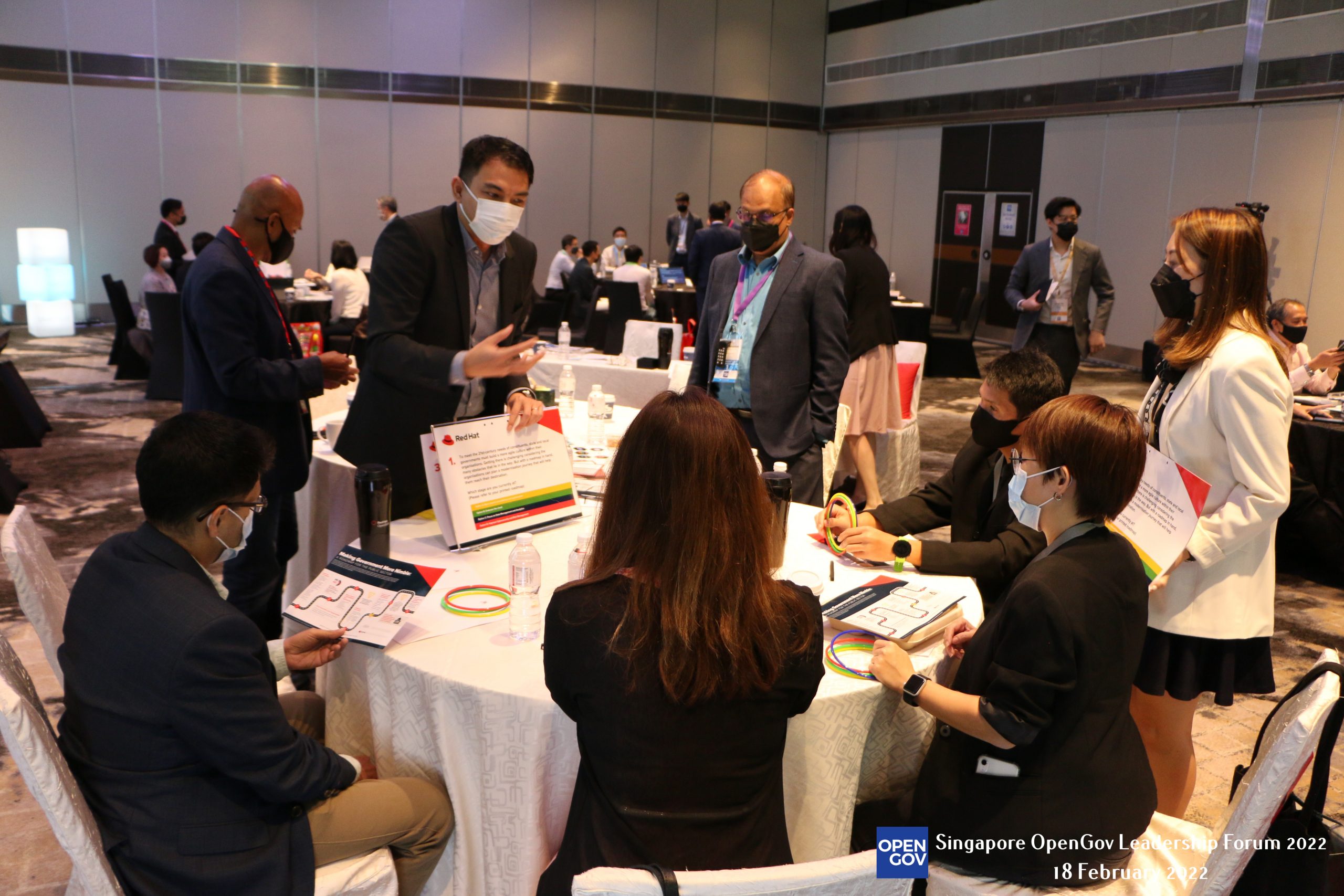 On the most important outcome they are seeking in their organisation’s digital transformation journey, 60% said that operational efficiency is the most important outcome. The remaining delegates equally felt that the speed of developing and deploying changes (20%) and the reliability of newly deployed changes (20%) was the most important.
On the most important outcome they are seeking in their organisation’s digital transformation journey, 60% said that operational efficiency is the most important outcome. The remaining delegates equally felt that the speed of developing and deploying changes (20%) and the reliability of newly deployed changes (20%) was the most important.
Regarding the role delegates see open-source software playing in their company’s digital transformation, a majority (67%) found it somewhat critical. The remaining delegates found it marginally critical (27%) and supercritical (7%).
About the external help delegates think is needed most to accelerate their digital transformation journey, most (40%) felt that mindset change and new ways of working is needed. The remaining delegates think that agile integration (30%), building the framework and a standard platform (20%) or automation (10%) is required.
When asked about what delegates thought was the most important skill set needed for their employees to remain relevant in the modern workspace, delegates opted for being a team player and having cross-cultural literacy (54%) and the ability to learn using digital tools (38%). The remaining delegates found the ability to work independently (8%) an important skill set.
In the poll on the area of interest that delegates value the most, just over a third (38%) were interested in tools that can deliver automation in areas like compliance and data classification. Other delegates were equally keen on the ease of doing business through a simplified technology consumption model (25%) and delivering business resiliency through highly available applications and workloads (25%). Visibility into cross-system data and infrastructure to identify unexpected changes and potential risks resonated with 13%.
In the final poll for the morning session, delegates were asked what they would spend on if they had an unlimited budget. Delegates were split between integrating disparate systems (31%) and resources to improve delivery timeline (31%), followed by staff training / upskilling (15%), Improving security and compliance (15%) and updating legacy technologies (8%).
Closing
In conclusion, Mohit emphasised the criticality of digital transformation in the age of COVID-19. Staying abreast of the technologies that can enable business outcomes, adapting to shifting cultures and taking risks are necessary if organisations want to continuously innovate and achieve operational efficiency.
















